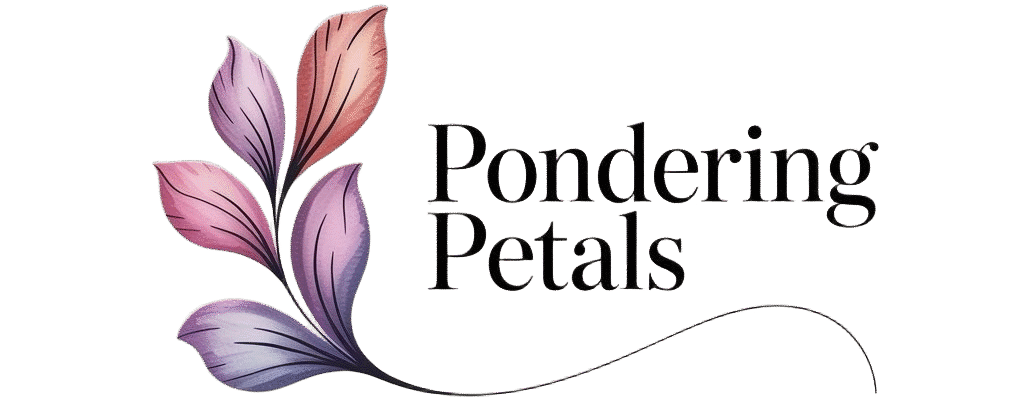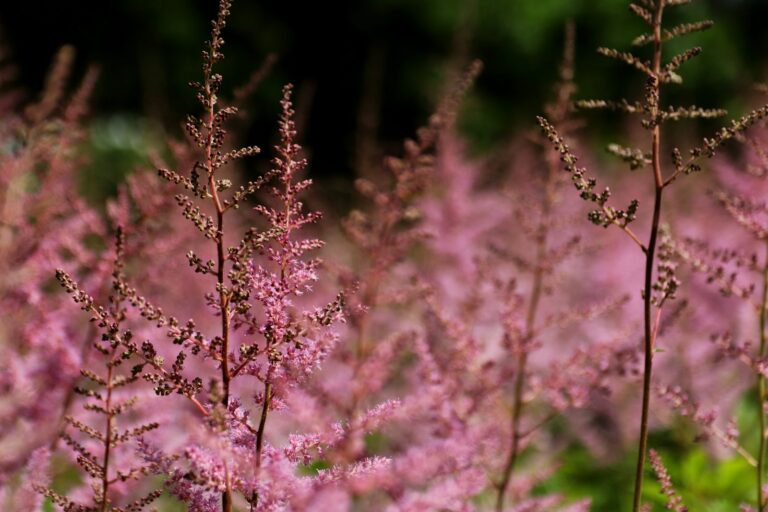Astilbe Pests: Identification & Control Methods
Astilbe plants typically resist most garden pests, but the larvae of black vine weevil feed inside larger roots and devour small roots entirely, weakening plants to the point of death[1]. The adults feed nocturnally and notch leaf margins, providing evidence that destructive larvae will soon follow[1]. Catching these pests early prevents root damage and plant loss.
Understanding Astilbe Pest Resistance
Astilbe is naturally resistant to most garden pests, but there are a few insects that target these shade-loving perennials when conditions favor infestations. Knowing how to spot pests and how to stop them protects your plants from serious damage. Both organic methods and selective chemical treatments can be good options to handle the problem in cases of more severe infestation.
Spider Mites: Hot Weather Menace
Spider mites take a turn for the worse when the air is hot or dry. These minute pests suck sap from leaves, causing yellowing and speckling on foliage. Fine webbing occurs on the undersides of leaves as their number grows[4]. Regular misting and maintaining adequate humidity reduce spider mite activity as they do best in dry environments[5]. Neem oil or insecticidal soap applied directly onto affected areas is an organic control agent[4]. Miticides which target spider mites are a much more suitable treatment in order to control severe infestations. Destruction that results from bleached astilbe leaves, bleaching and discoloration, indicates that spider mite feeding is occurring, and calls for immediate correction[1].
Spider mites thrive in hot, dry conditions—regular misting and maintaining humidity are your first line of defense.
Japanese Beetles: Metallic Defoliators
A visible threat comes from Japanese beetles, whose shiny metallic green bodies and copper-brown wings make them easy to identify. These beetles feed on tissue between leaf veins to skeletonize the leaves and flowers of astilbe[2]. Adults in summer months can quickly defoliate the plants when populations are high.
Effective control methods for Japanese beetles include:
- Handpicking in early morning when beetles are sluggish
- Dropping collected beetles into soapy water for immediate kill
- Pheromone traps positioned at least 50 feet from sensitive plants[2]
- Pyrethrum sprays when physical removal cannot manage infestations
The grubs of Japanese beetles feed on plant roots and reside in soil but have a strong environmental impact, particularly on lawn areas near where astilbe have been planted.
Aphids: Sap-Sucking Colonizers
Aphids become clumped on the ends of stems and on the new growth, suck sap from the plants, which results in a curling of the leaves. A sticky substance called honeydew covers leaves where aphids feed heavily, and this residue lures in sooty mold growth.
Organic Aphid Control Methods
Strong, persistent sprays of water pull aphids out of plants when used every couple of days[4]. Insecticidal soap or neem oil sprays are applied directly to aphid clusters and thus offer organic control of the aphid, without harming any beneficial insects. Ladybugs, lacewings and other predatory insects naturally manage aphid populations when they arrive in gardens. Planting flowers that attract these beneficial insects lessens the reliance on chemical treatments.
Black Vine Weevil: The Most Destructive Pest
Of all types of pests, black vine weevil has the most destructive impact on astilbe. Legless white grubs have brown heads up to a quarter inch long and feed on roots during larval feeding[3]. Larvae consume small roots extensively and feed inside larger roots, disturbing water and nutrient flow[1]. Injured plants wilt quickly and are destroyed due to extensive root damage.
Adult weevils are one-half inch long, black with a beaded thorax and yellow spots on their wing covers[1]. These flightless females feed nocturnally on leaves, a distinctive feature that presents itself as notched margins. Adults must feed three to four weeks before laying eggs in soil next to plant bases[1].
Black Vine Weevil Control Strategy
| Control Method | Application Timing | Effectiveness | Notes |
|---|---|---|---|
| Beneficial nematodes | Early morning/evening | High for larvae | Soil temp must be above 50°F[3] |
| Acephate (chemical) | May-July | Moderate for adults | Apply at 3-week intervals[1] |
| Fluvalinate (chemical) | May-July | Moderate for adults | Resistance common[1] |
| Hand inspection | Nightly | Low-moderate | Adults feed at night only |
By treating soil with helpful nematodes, we can get ahead of black vine weevil larvae with a good first line of defense. A number of nematode species kill weevil grubs by entering their bodies. Both Steinernema carpocapsae and Heterorhabditis heliothidis are commercially available, and H. heliothidis appears to be better against early larval stages at deeper soil depths[3]. Soil temperatures must not drop below 50 degrees Fahrenheit and moisture levels must remain suitable for nematodes to survive[3]. Apply nematodes as soil drenches over already moist soil in early morning or evening[7].
Chemical controls such as acephate and fluvalinate inhibit adult weevils feeding before egg-laying begins[1]. Use foliar sprays on an ongoing basis from May, June and July at three-week intervals to manage the emergent adults. Resistance to the insecticide frequently occurs in black vine weevil populations and adults survive days from fluvalinate poisoning even after they appear to have died[1].
Slugs and Snails: Shade Garden Menace
Slugs and snails thrive in shady gardens where astilbe flourishes. The pests chew irregular holes in leaves and create slimy trails along leaf surfaces[4]. Handpicking slugs and snails during evening hours when they actively feed removes many individuals.
Control methods include:
- Copper barriers around plants prevent slugs from reaching astilbe because copper reacts with their slime
- Organic slug pellets containing iron phosphate provide effective control without harming pets or wildlife
- Physical barriers and periodic slug removal control are more consistent than single control methods
Asiatic Garden Beetles: Nocturnal Feeders
Asiatic garden beetles also prefer to feed on astilbe leaves. Size: Approximately one-third inch in length, adults exhibit a reddish-brown color and an iridescent sheen[1]. These insects are nocturnal, appearing in late June and becoming more abundant in mid July. Eggs don’t grow without moisture, so populations fall off in the heat-soaked summers. Grubs feed on roots near the soil surface to survive, and then at depths up to one foot, they overwinter. Grubs return to surface feeding on roots in late April, returning to surface feeding, and are subsequently turned into prepupal stages late in May and early into June. Adults develop two to four weeks post pupation having one generation every year.
Acephate, azadirachtin, carbaryl, and malathion sprays block feeding in the adults once they are already grown[1]. Imidacloprid used early in the season as a soil drench has a systemic effect over the season. Lawn treatment reduces the numbers of beetles because grubs develop in turf.
Preventive Measures: Cultural Controls
They reduce problems related to pests markedly because of preventive measures. Adequate plant distribution leads to airflow circulation and unfavorable environment for breeding of fungi and pests. Plant spacing should be well spaced so that foliage receives adequate moisture to absorb rain or watering and it dries quickly after rain or watering. To preserve soil moisture, mulching made from organic material also acts as a barrier between soil-dwelling pests[4].
Healthy plants with consistent moisture and proper nutrition withstand pest damage far better than stressed specimens.
Healthy plants with good moisture and good nutrition can withstand the damages of pests more readily than stressed specimens. Resisting drought stress is one very effective way to minimize spider mite infestations because these pests prefer dry environments.
Regular Monitoring: Early Detection Strategies
Regular monitoring is where problems with pests are spotted early when control is easiest to undertake. For growing season inspections of astilbe plants weekly which would involve inspection of upper and lower foliage surfaces.
Check for these signs during inspections:
- Physical damage such as holes, notching, discoloration, and wilting
- Visible insects on leaves and stems
- Webbing and slime trails
- Sticky honeydew residue
Early identification means that intervention can have effect before populations become harmful. A magnifying glass can detect smaller pests such as spider mites that tend to be overlooked.
Encouraging Beneficial Insects
When insects are encouraged to stay, it’s beneficial and a natural way to prevent pests without chemicals. Aphids and soft-bodied pests are prey for lacewings, ladybugs and hoverflies. Nectar-rich flowers such as dill, fennel, and yarrow provide habitat to and support beneficial insect populations[4].
This shelter is provided with small piles of brush or bought insect hotels to provide beneficial insects with nesting and overwintering shelters. The avoidance of broad-spectrum pesticides conserves pollinating insects; thus damaging and beneficial insects are killed evenly by broad-spectrum chemicals, and the pollutions that spread to beneficial insects that the crops kill.
Chemical Controls: Last Resort Options
This is why chemical controls are the last resort when organic approaches do not control severe infestations. Specific insecticides, with particular targeting effects on any given pest group, cause less harm to the environment than broad-spectrum ones.
Place chemical treatments in early morning or late evening to minimize negative effects to pollinating insects. Follow strictly all label instructions related to application rates, timing and health and safety instructions as such. The applicators are protected against exposure to chemicals by wearing protective gear while applying the substance. The most sustainable long-term results come from combining chemical treatments with cultural controls and preventive measures[4].
Integrated Pest Management for Astilbe
Astilbe pest management works through continuous monitoring, prompt detection and proper pest control at varying degrees of severity. Knowledge of pest life-cycles and susceptibilities facilitates optimal timing of control, yielding optimal results. Most pest problems are managed by using organic means–physical elimination, obstacles, helpful insects, botanical sprays – and do not require chemical treatments. Severe infestations do need targeted methods of chemical management to prevent plant loss.
The foundation for success begins with cultural practices.
Culture, a way to keep plants healthy, forms a basis for natural pest immunity and long term gardening success[4].
Key Sources:
[1] Astilbe (Astilbe) | CT.gov Plant-Pest Handbook
[2] Beetles – Surface feeders | Missouri Botanical Garden
[3] Black vine weevil | Missouri Botanical Garden
[4] Pest Control for Astilbe: How to Identify & Manage Common Pests | Dutch Bulbs Blog
[5] Astilbe Guide: How to Grow and Care for Astilbe Flowers | Planet Natural
[7] Root weevils target rhododendrons in late spring | Oregon State Extension
Lily Morgan is a home gardener. She grows houseplants and designs small-space gardens. She shares what she learns from experience. Lily offers simple, practical tips for plant lovers. Her goal is to help others garden with confidence. She wants to help them grow, one leaf at a time.


